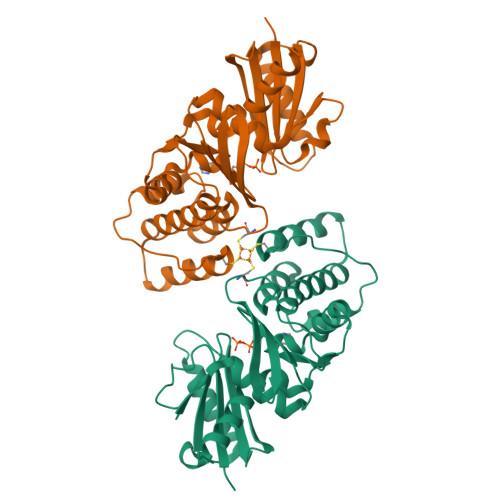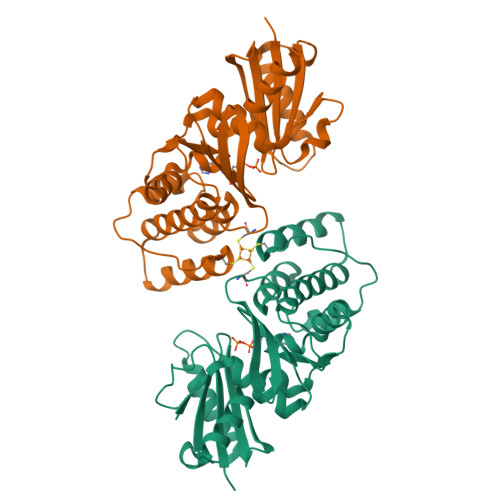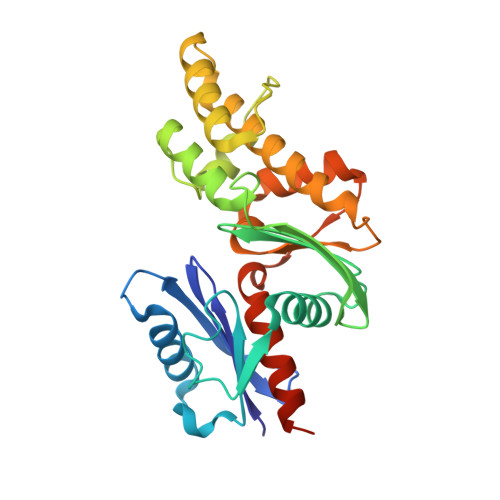Crystal structure of the Acidaminococcus fermentans 2-hydroxyglutaryl-CoA dehydratase component A.
Locher, K.P., Hans, M., Yeh, A.P., Schmid, B., Buckel, W., Rees, D.C.(2001) J Mol Biology 307: 297-308
- PubMed: 11243821
- DOI: https://doi.org/10.1006/jmbi.2000.4496
- Primary Citation of Related Structures:
1HUX - PubMed Abstract:
Acidaminococcus fermentans degrades glutamate via the hydroxyglutarate pathway, which involves the syn-elimination of water from (R)-2-hydroxyglutaryl-CoA in a key reaction of the pathway. This anaerobic process is catalyzed by 2-hydroxyglutaryl-CoA dehydratase, an enzyme with two components (A and D) that reversibly associate during reaction cycles. Component A (CompA), a homodimeric protein of 2x27 kDa, contains a single, bridging [4Fe-4S] cluster and uses the hydrolysis of ATP to deliver an electron to the dehydratase component (CompD), where the electron is used catalytically. The structure of the extremely oxygen-sensitive CompA protein was solved by X-ray crystallography to 3 A resolution. The protein was found to be a member of the actin fold family, revealing a similar architecture and nucleotide-binding site. The key differences between CompA and other members of the actin fold family are: (i) the presence of a cluster binding segment, the "cluster helix"; (ii) the [4Fe-4S] cluster; and (iii) the location of the homodimer interface, which involves the bridging cluster. Possible reaction mechanisms are discussed in light of the close structural similarity to members of the actin-fold family and the functional similarity to the nitrogenase Fe- protein.
Organizational Affiliation:
Howard Hughes Medical Institute, Division of Chemistry and Chemical Engineering, California Institute of Technology, Mail Code 147-75CH, Pasadena, CA 91125, USA.




















